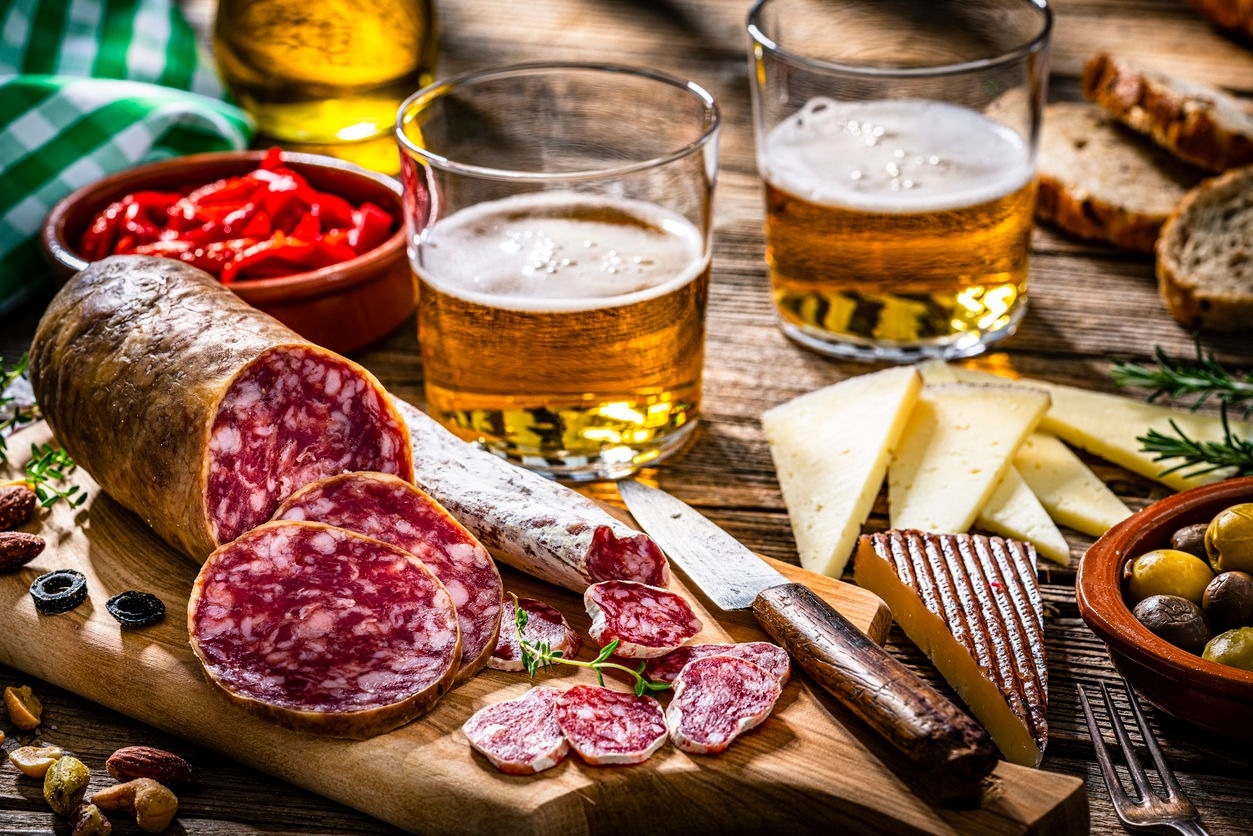A common preservative used to kill pathogens in food has been found to also affect beneficial bacteria, endangering the balance of beneficial bacteria in the gut microbiome.
 Foods like sausage, cheese, and beer often contain food preservatives derived from naturally produced antibiotics.Image Credit: University of Chicago
Foods like sausage, cheese, and beer often contain food preservatives derived from naturally produced antibiotics.Image Credit: University of Chicago
To keep their products fresh, food manufacturers frequently add preservatives to their products. The principal aim of these preservatives is to eliminate microorganisms that may decompose and cause food spoilage. For centuries, common preservatives such as sugar, salt, vinegar, and alcohol have been used; however, contemporary food labels now list more unusual ingredients like potassium sorbate, sodium benzoate, and calcium propionate.
To destroy their rival microorganisms, bacteria create substances known as bacteriocins. Due to their ability to eradicate potentially harmful pathogens from food, these chemicals can act as natural preservatives. The food industry frequently uses lanthipeptides, a class of bacteriocins with particularly strong antimicrobial qualities. These compounds are sometimes referred to as “lantibiotics” (a scientific portmanteau of lanthipeptide and antibiotics).
Though these lantibiotics are widely used, little is known about how they impact the gut microbiomes of those who eat food containing them. The delicate balance of microbes in the gut is maintained by commensal bacteria, which benefit the body by producing metabolites, breaking down nutrients, and - most importantly - guarding against infections.
Antimicrobial food preservatives may cause opportunistic pathogenic bacteria to proliferate and wreak havoc if they kill off too many commensals indiscriminately. This would be no better than eating contaminated food in the first place.
Effects on Good and Bad Bacteria
According to a recent study by researchers at the University of Chicago, one of the most popular classes of lantibiotics has strong antimicrobial and probiotic properties that help maintain human health. The study was published in ACS Chemical Biology.
A common lantibiotic found in cheese, dipping sauces, beer, and sausage is nisin. Although microorganisms in the human gut also produce comparable lantibiotics, it is made by bacteria that inhabit the mammary glands of cows. Zhenrun “Jerry” Zhang, PhD, was interested in researching the effects of naturally-occurring lantibiotics on commensal gut bacteria. Zhang is a postdoctoral scholar in the lab of Eric Pamer, MD, the Donald F. Steiner Professor of Medicine and Director of the Duchossois Family Institute at UChicago.
Nisin is, in essence, an antibiotic that has been added to our food for a long time, but how it might impact our gut microbes is not well studied. Even though it might be very effective in preventing food contamination, it might also have a greater impact on our human gut microbes.”
Zhenrun J. Zhang, Postdoctoral Scholar, Duchossois Family Institute, University of Chicago
Using a publicly available database of human gut bacterial genomes, Zhang and colleagues were able to identify the genes encoding six distinct gut-derived lantibiotics that bear a striking resemblance to nisin, four of which were novel.
The scientists then created versions of these lantibiotics to test their effects on pathogens and commensal gut bacteria at the University of Illinois Urbana-Champaign, working with Wilfred A. van der Donk, PhD, the Richard E. Heckert Endowed Chair in Chemistry. The scientists discovered that although the various lantibiotics had different effects, they all eliminated commensal bacteria and pathogens.
Zhang says, “This study is one of the first to show that gut commensals are susceptible to lantibiotics, and are sometimes more sensitive than pathogens. With the levels of lantibiotics currently present in food, it’s very probable that they might impact our gut health as well.”
Harnessing the Power of Lantibiotics
In an effort to learn how to make the most of the lantibiotics’ antimicrobial qualities, Zhang and team also investigated the peptides’ structural makeup. For instance, the Pamer lab demonstrated in a different study that mice are protected against antibiotic-resistant Enterococcus infections by a group of four bacteria, one of which produces lantibiotics.
To learn more about how these bacteria can colonize the gut under various diets and conditions, researchers are also examining the frequency of lantibiotic-resistant genes in various human populations.
It seems that lantibiotics and lantibiotic-producing bacteria are not always good for health, so we are looking for ways to counter the potential bad influence while taking advantage of their more beneficial antimicrobial properties.”
Zhenrun J. Zhang, Postdoctoral Scholar, Duchossois Family Institute, University of Chicago
Source:
Journal reference:
Zhang, J. Z., et al. (2024) Activity of Gut-Derived Nisin-like Lantibiotics against Human Gut Pathogens and Commensals. ACS Chemical Biology. doi.org/10.1021/acschembio.3c00577